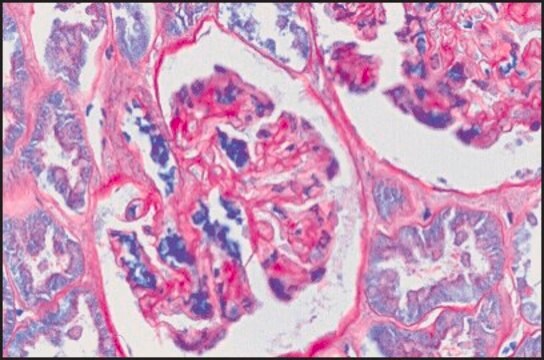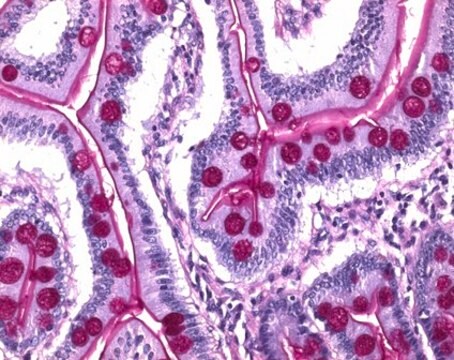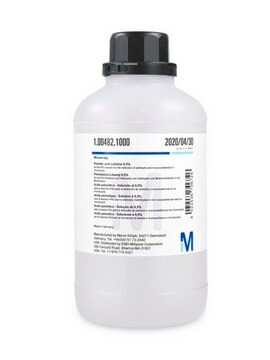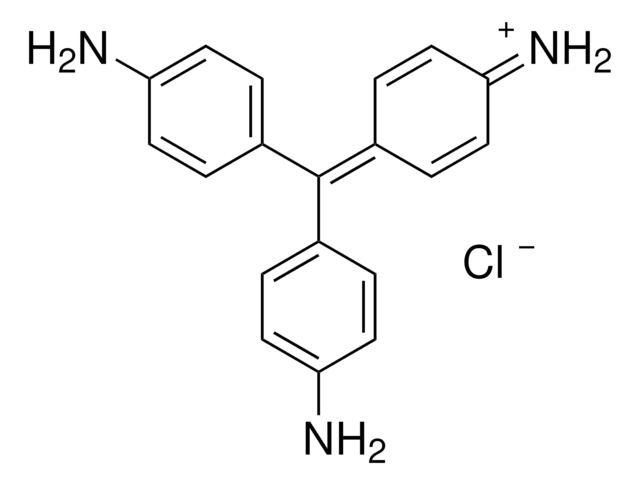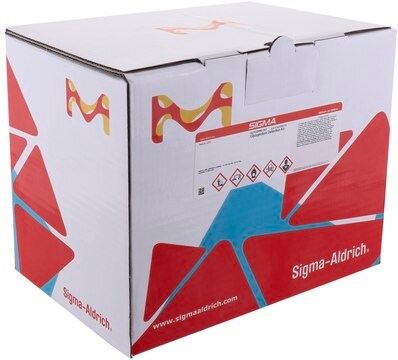1.09033
Schiff′s reagent
for microscopy
About This Item
Produits recommandés
Niveau de qualité
Forme
liquid
IVD
for in vitro diagnostic use
pH
2.1-2.5 (25 °C in H2O)
Densité
1.01 g/cm3 at 20 °C
Application(s)
clinical testing
diagnostic assay manufacturing
hematology
histology
Température de stockage
15-25°C
Catégories apparentées
Description générale
Application
Code de la classe de stockage
12 - Non Combustible Liquids
Classe de danger pour l'eau (WGK)
WGK 1
Point d'éclair (°F)
Not applicable
Point d'éclair (°C)
Not applicable
Listes réglementaires
Les listes réglementaires sont principalement fournies pour les produits chimiques. Seules des informations limitées peuvent être fournies ici pour les produits non chimiques. L'absence d'indication signifie qu'aucun des composants n'est répertorié. Il incombe à l'utilisateur de s'assurer de l'utilisation sûre et légale du produit.
EU REACH Annex XVII (Restriction List)
Certificats d'analyse (COA)
Recherchez un Certificats d'analyse (COA) en saisissant le numéro de lot du produit. Les numéros de lot figurent sur l'étiquette du produit après les mots "Lot" ou "Batch".
Déjà en possession de ce produit ?
Retrouvez la documentation relative aux produits que vous avez récemment achetés dans la Bibliothèque de documents.
Les clients ont également consulté
Articles
Fungal stains remain an important tool in the histology laboratory's diagnostic arsenal for identifying infectious microorganisms.
Contenu apparenté
Learn about the criticality of biological tissue staining for research and clinical pathology using standard and special stains and dyes.
Apprenez-en davantage sur le caractère critique de la coloration de tissus biologiques pour la recherche et la biologie médicale en utilisant des colorants standards et spéciaux.
Notre équipe de scientifiques dispose d'une expérience dans tous les secteurs de la recherche, notamment en sciences de la vie, science des matériaux, synthèse chimique, chromatographie, analyse et dans de nombreux autres domaines..
Contacter notre Service technique